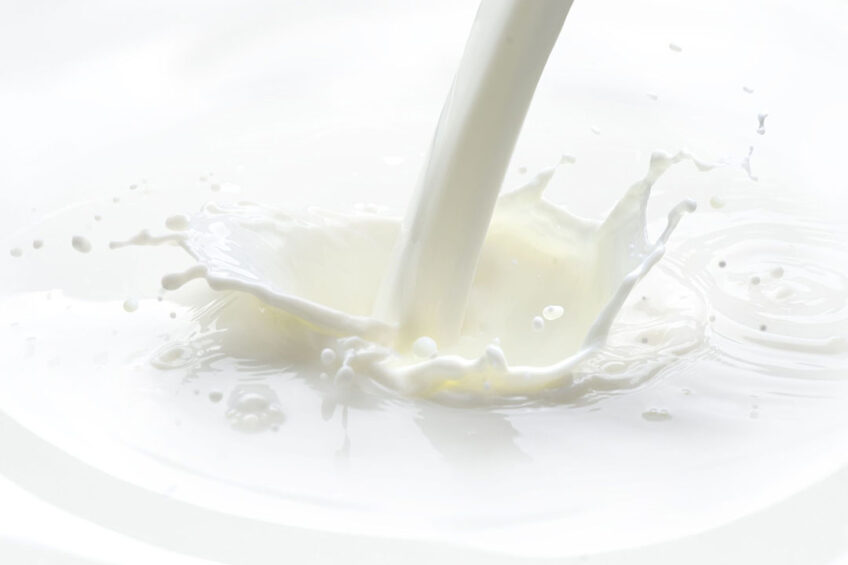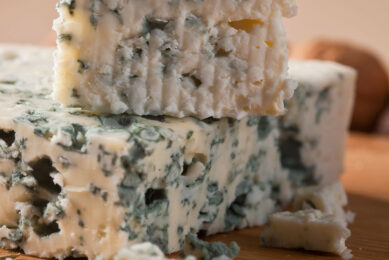Analysis of spore reduction strategy in raw milk

A new study shows that a low-cost, easy-to-implement intervention on dairy farms reduces spores in the bulk tank raw milk, extends fluid milk shelf-life, reduces exposure of consumers to reduced-quality products, and reduces food waste, positively impacting the environment.
Bacterial spores, which are found in raw milk, can survive harsh processing conditions encountered in dairy manufacturing, including pasteurisation, and drying. Low-spore raw milk is desirable for dairy industry stakeholders, especially those who want to extend the shelf-life of their products, expand their distribution channels, or reduce product spoilage.
A recent study showed that an on-farm intervention that included washing towels with chlorine bleach and drying them completely, as well as training milking parlour employees to focus on teat-end cleaning, significantly reduced spore levels in bulk tank raw milk. As a follow-up to the previous study, researchers of the current study focused on calculating the costs associated with the intervention strategy.
“…a 37% and 40% decrease in bulk tank raw milk mesophilic spores and thermophilic spores were observed.”
Common control strategies for reducing dairy product spoilage by spore-forming bacteria focus primarily on processing interventions such as centrifugation and microfiltration pasteurisation. However, a growing body of evidence suggests that reducing the incoming level of spores in raw milk by controlling on-farm management practices is a viable option for obtaining low-spore raw milk and subsequently reducing or delaying product spoilage.
On-farm intervention
The on-farm spore intervention strategy was applied on conventional dairy farms and included the following 3 main aspects:
- Adding chlorine bleach at a concentration of 200 ppm to the wash cycle for the laundered towels used during udder preparation before milking unit attachment.
- Drying the laundered towels completely following the wash cycle.
- A short, classroom-style training of milking parlour employees on the importance of thorough teat-end cleaning during milking. Training occurred between shift changes so that both night-time and day-time milking parlour employees could attend.
All parts of the intervention were applied concurrently on each farm. Using this intervention, a 37% and 40% decrease in bulk tank raw milk mesophilic spores and thermophilic spores were observed, respectively, compared with spore levels in raw milk before the intervention was applied.
Economic benefits of on-farm intervention strategy
While the researchers demonstrated that the intervention strategy described in their previous study is effective at reducing bulk tank raw milk spore levels, the cost of the intervention may be a barrier to implementation at the production level.
In the current study, the cost analysis assumed farms will apply a combination of all the interventions (e.g., washing towels with bleach, drying towels, and giving a one-time training to milking parlour employees) at the same time. To calculate the cost of the intervention, the researchers made the following assumptions:
- 1 dryer can dry 15 1-h loads of 100 towels per day.
- The cost of a dryer is $1,000.
- The average lifespan of a dryer is 3 years.
- The cost of electricity is $0.12/kWh.
- The average dryer uses 3.3 kW of energy per hour.
- A 3-pack of concentrated bleach (Clorox) costs $14.15.
- Milking employee training costs $125 per year.
- Cows are milked 3 times per day.
- Average milk yields of 12,700 kg/cow per year (28,000 lbs/cow per year). Yearly costs were calculated based on herd size.
The cost to implement the intervention strategy ranged between US$9.49 and US$13.35 per cow per year based on herd size, or between US$0.03 and US$0.05 per hundred-weight (CWT) of raw milk depending on herd size, assuming a herd average of 12,700 kg (28,000 lbs) produced per cow per year. The researchers found this to be cost-effective compared to the overall costs associated with maintaining a dairy cow each year. For farms that already dry towels, the estimated intervention cost ranged from an additional US$4.45 to US$5.64 per cow per year depending on the size of the farm.
“Importantly, our analysis indicates that the cost per cow of applying the intervention strategy drops as the herd size increases. In addition to the outcome of significantly reducing the bacterial spore level in bulk tank raw milk, we expect that this on-farm intervention strategy would also reduce the risk of mastitis and high somatic cell counts, as the intervention focuses on cleaner teat ends and good milking parlour practices, which would provide additional cost savings to producers,” they said.
Risk of consuming fluid milk
A survey was conducted to determine how many consumers regularly consume fluid milk near or past the date printed on the package (i.e., code date), which revealed that over 50% of fluid milk consumers surveyed continue to consume fluid milk after this date, indicating that a considerable proportion of consumers are exposed to fluid milk that is likely to have high levels of spore-forming bacterial growth and possibly associated quality defects (e.g., flavour or odour defects).
The researchers stated: “Due to the far-reaching impacts of consumer dissatisfaction with food products, it is critical for dairy industry stakeholders to reduce the risk of consumer exposure to reduced-quality fluid milk products using strategies such as those outlined here.”
Future focus areas
This research work demonstrates that applying a low-cost, easy-to-implement intervention on dairy farms will not only reduce psychrotolerant spores in the bulk tank raw milk but help extend fluid milk shelf-life, reduce exposure of consumers to reduced quality products, and reduce the environmental impact of dairy by reducing food waste.
“Our study provides dairy producers with key information to assess the economic benefits of spore reductions and will provide data for processors to set premiums for low-spore milk. Ultimately, dairy industry stakeholders across the fluid milk continuum are negatively impacted by consumer dissatisfaction with milk products, including spoilage and reduced quality resulting from the growth of spore-forming bacteria originating from raw milk, highlighting the need for dairy processors to incentivise the implementation of this intervention through premiums to producers.”
In addition, a recommendation was proposed for future studies to focus on the effectiveness of this intervention and its impact on the incidence of mastitis, and developing models that can predict the impact this intervention would have on cheeses and dairy powders.
Join 13,000+ subscribers
Subscribe to our newsletter to stay updated about all the need-to-know content in the dairy sector, two times a week.










